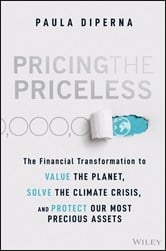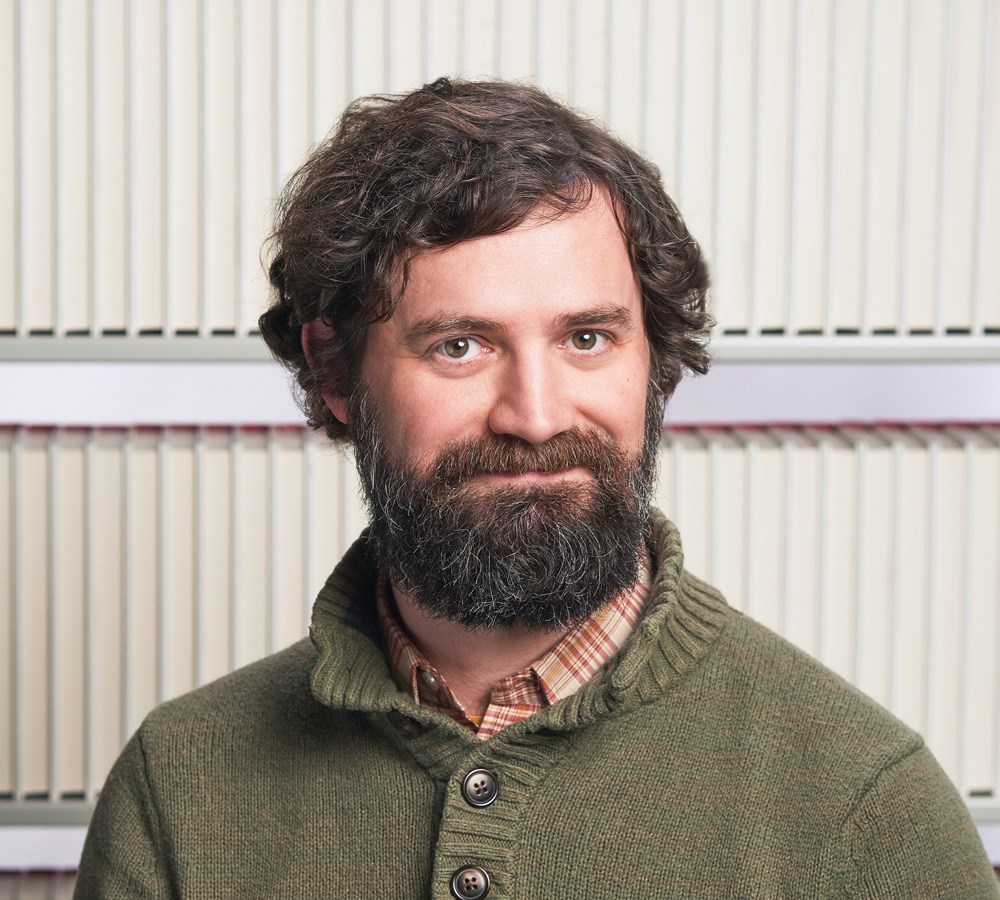Pricing the Priceless: The Financial Transformation to Value the Planet, Solve the Climate Crisis, and Protect Our Most Precious Assets
June 30, 2023
Paula DiPerna writes beautifully about the moral bankruptcy of how value is assigned in our society, and of the sensible, sustainable ways we can flip the script to repair our economics and environment.
 Pricing the Priceless: The Financial Transformation to Value the Planet, Solve the Climate Crisis, and Protect Our Most Precious Assets by Paula DiPerna, Wiley
Pricing the Priceless: The Financial Transformation to Value the Planet, Solve the Climate Crisis, and Protect Our Most Precious Assets by Paula DiPerna, Wiley
“Until the now of things.”
Here in Milwaukee, and across a large swath of the Great Lakes region, the air has been thick with wildfire smoke this past week. We aren’t the only ones, and this is not the first time it has happened on this scale. Orange skies of thick smoke plagued New York City earlier this summer, the Northwest and Northern California last year, and Australia years before that. Our world is quite literally on fire. Our climate is in crisis. As Paula DiPerna writes in her new book:
For decades climate science has brought us facts, but these … seemed to describe incidents and places beyond ourselves, not about us. Until the now of things.
DiPerna was once Vice President for International Affairs for the Cousteau Society and worked closely with Jacques-Yves Cousteau himself. It was Cousteau, she says, who first opened her eyes to “the absurdities of our pricing systems relative to the stewardship of invaluable resources.” When she asked why he wasn’t upset about the tragedy unfolding after the Exxon Valdez oil spill in 1989, he replied “I am upset, but the real tragedy is taking that oil out of the ground at today’s oil prices.” The press was framing the tragedy as a wildlife story, and what happened to the animals and environment affected was a tragedy. But it was tragic that the Exxon Valdez entered the Prince William Sound in the first place, a tragedy how our economics came to value oil over the envionment it was extracted from.
In addition to working with Jacques Cousteau, DiPerna begins and ends the book with details of her work with (clearing my throat) the Pope on this issue. Pope Francis issued the Laudato Si encyclical calling climate change “one of the principal challenges facing humanity in our day” in 2015. It was a call for us all to work together to save our common home. And while DiPerna respected the Pope’s “rejection of dogma” in addressing issues like climate change and gay rights, she found fallible his argument that carbon credits were but “the guise of a certain commitment to the environment.” While the Pope saw it as a continuation of the commercialization that led us into the current crisis, DiPerna writes that:
It seemed to me that dismissing capitalism and the drive to make money as irredeemably in conflict with environmental stewardship is another rigid sweeping dogma whose time has gone.
DiPerna is not an apologist for the failures of our current economic system. Indeed, she believes that:
In some ways, contemporary capitalism has become a caricature of itself, spreading as much poverty as wealth, directing investment to the reckless extraction of minerals and fuels, rampant shearing of forests, paving over wetlands, and countless other dubious projects. Yet it is also possible that capitalism can right its wrongs, and I am open to optimism instead of complaint and despair.
I am open to such optimism, as well, especially because of books like Ages of American Capitalism, in which Jonathan Levy shows how other incarnations of capitalism in our country and beyond are not only possible, but have been—for better and, in fact, much worse—a reality in our world. It all comes down to the choices we make as a society. Our moral values should lead to what we value in our economy, and right now that balance seems, like the climate itself, in upheaval. But it doesn’t have to be.
Indeed, some of the most promising efforts to avoid the worst outcomes of climate change have come from a source you might not expect—economists and accountants. As Tim Harford noted in Fifty Things That Made the Modern Economy, double-entry bookkeeping was as important an invention as any in creating the modern world. In fact, of his book Summa de Arithmetica, Geometria, Proportioni et Proportionalita, Harford writes that:
[Luca] Pacioli included 27 pages that are regarded by many as the most influential work in the history of capitalism. It was the first description of double-entry bookkeeping to be set out clearly, in detail and with plenty of examples.
Accounting is a powerful force, but what we are accounting for needs to change to restore the health of the economy and the environment. Our health as a people depends on both. Currently, like human health, conventional economics does not properly account for the profit of maintaining a healthy ecosystem, or the cost of environmental degradation. Quite the opposite. Just as a sick human adds more to the bottom line of our healthcare system today than does a healthy one, a forest that is cut down, sold off, and constructed into something else adds directly to a nation’s GDP while one left in place does not. In this way, our quality of life no longer aligns with how we measure economic growth and progress. But there have been efforts to change that, and Pricing the Priceless does a great job of explaining and adding to those efforts—both philosophically and in real-world practice. Marilyn Waring is one of many examples DiPerna calls upon to make the case:
Waring, a political economist and academic who also served in the New Zealand parliament, wrote If Women Counted: A New Feminist Economics, published in 1988. The landmark work pointed out that the denial of nature’s work as economically valuable was no surprise, given the denial in conventional economics of women’s work in child-rearing and other “non-productive” activities.
Hazel Henderson, in The Politics of the Solar Age, published in 1981, argued forcefully for accounting for so-called “externalities.” DiPerna also points to how GDP has been updated to take intangibles like R&D and intellectual property into account. Another brilliant addition to the conversation is the chapter on Detroit’s municipal bankruptcy, and how the Detroit Institute of the Arts collection was leveraged to raise money that would help alleviate the city’s budget shortfalls while keeping the collection together (rather than selling it off to meet the city’s debts) and helping preserve the pension fund.
I am also hopeful because:
Yes, changing climate presents a vast engineering problem, but also a vast jobs creation potential for people with every level of skill. There is so much to redesign, retrofit, rehab, reinvent, and reconstruct—an exciting expansive reconception of how we organize our energy and energies.
And we can work in conjunction with the forces of nature to do that work. At its core:
Crass as it all sounds, all of nature is an economic machine constantly generating benefits, but without price tags.
So, it stands to reason that—in a world where what gets measured gets managed, and only those things with price tags attached are deemed capable of holding value—we need to do is find a way to price the benefits of nature. DiPerna recognizes the morally treacherous terrain she is walking. It would be easier, as the Pope did, to denounce commercialism altogether. But capitalism is good at some things, and it is a construct we can decide to improve by finally financially accounting for the value of the natural assets and systems that underpin all human-made systems, the life that makes our lives possible.
So how do we price what is beyond price?
Such is the vexing and inescapable paradox of our current economic lives. Addressing climate change is entwined in that paradox. It requires that we assign a tangible value to the intangibles that make up the aptly named global commons, the transcending intangible of our time. Reconciling these irreconcilables fairly for all people is perhaps the emerging purpose of the economy itself. Are we up for it?
DiPerna can’t answer that question in this book, but she writes beautifully about the possibility, and with practicality about some of the methods we can use. What is apparent is that:
Old ideas about money—what it’s worth, how it operates, and what backs it up—are becoming useless and obsolete because of a gaping flaw in our financial systems no longer possible to ignore: failure to financially value and price the priceless, the ineffable elements of life, especially our atmosphere, on which our environmental and social stability now increasingly depend. The result? Intangible yet indispensable natural assets taken financially for granted, and therefore essentially laid waste.
Reversing this reality is neither a fringe nor naïve, but a necessary seismic shift.
Money is, in the end, a social construct. Whether we attach value to gold, or to cowrie shells, or to carbon credits—or even in something like a rhino bond to protect that species because we believe there is worth in doing so—is up to us. To be good ancestors to those coming after, we must update our assumptions, stories, and the stores of value we have inherited and used today. We have to be less dogmatic.
In 2019, the Pope issued a letter updating his view of carbon credits in the encyclical. “Carbon pricing,” it read, “is essential if humanity is to use the resources of creation wisely.” That even the Pope can change his mind is a helpful reminder that:
The climate crisis is not only a crisis of science, but of contemplation.
The smoke is starting to clear in Milwaukee. But it will continue accumulating in our atmosphere and in the arguments around climate change. To see clearly, and to solve the crisis, we need an ecosystemic approach to economics. We need a new accounting. “The free ride on our planet’s assets,” writes DiPerna, “has run out of justification. Pricelessness is the currency to end it.”



